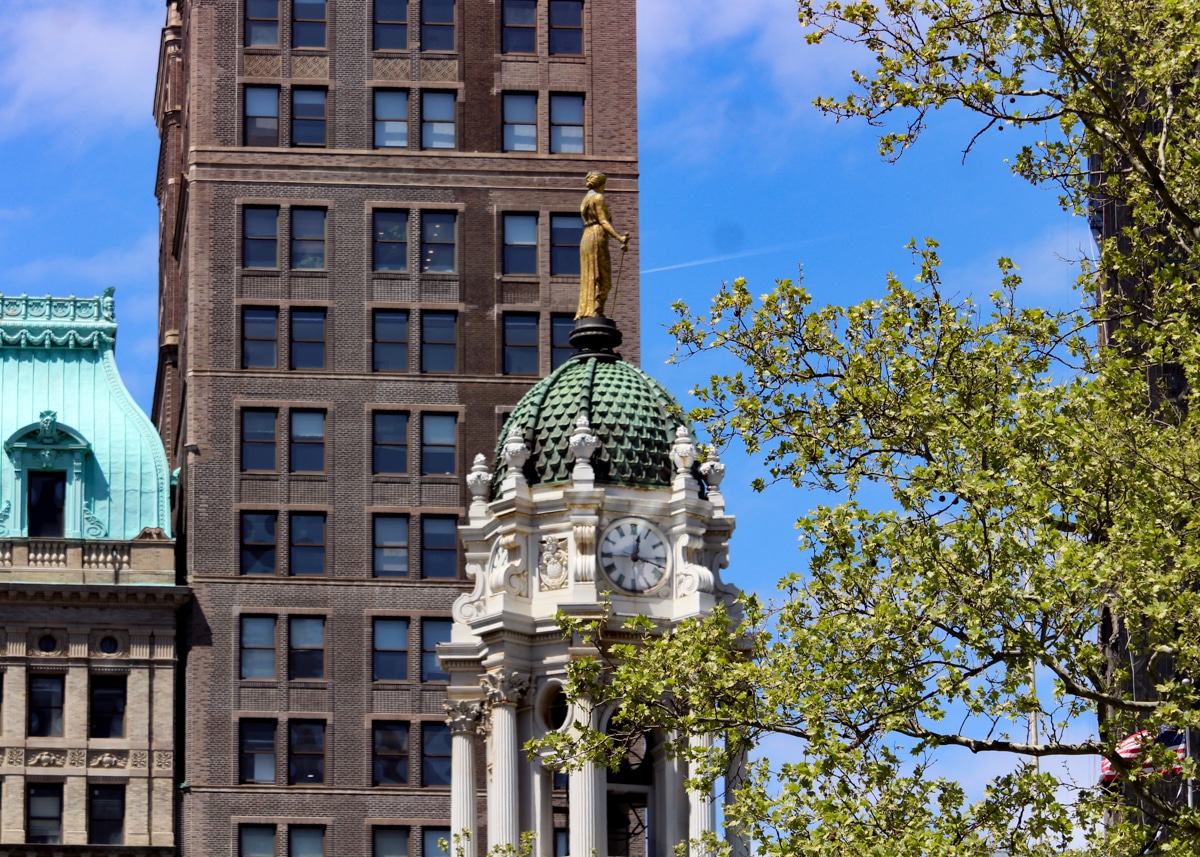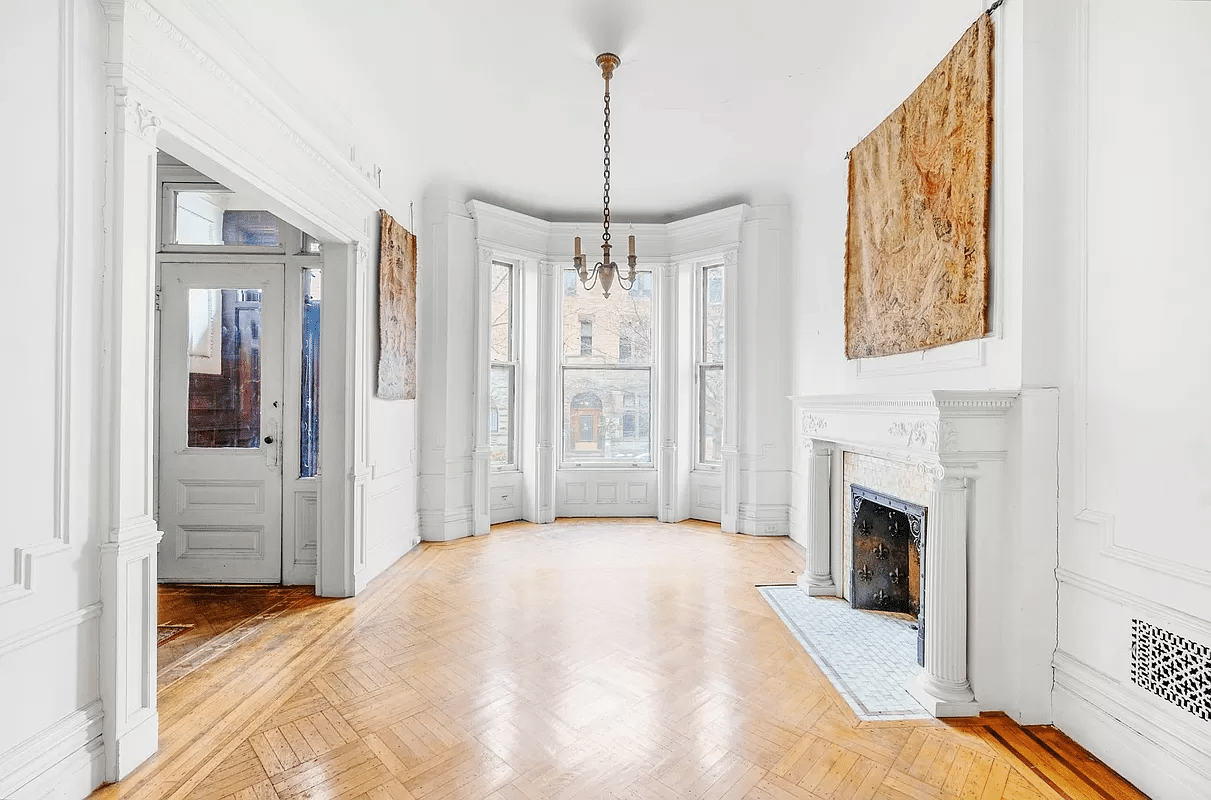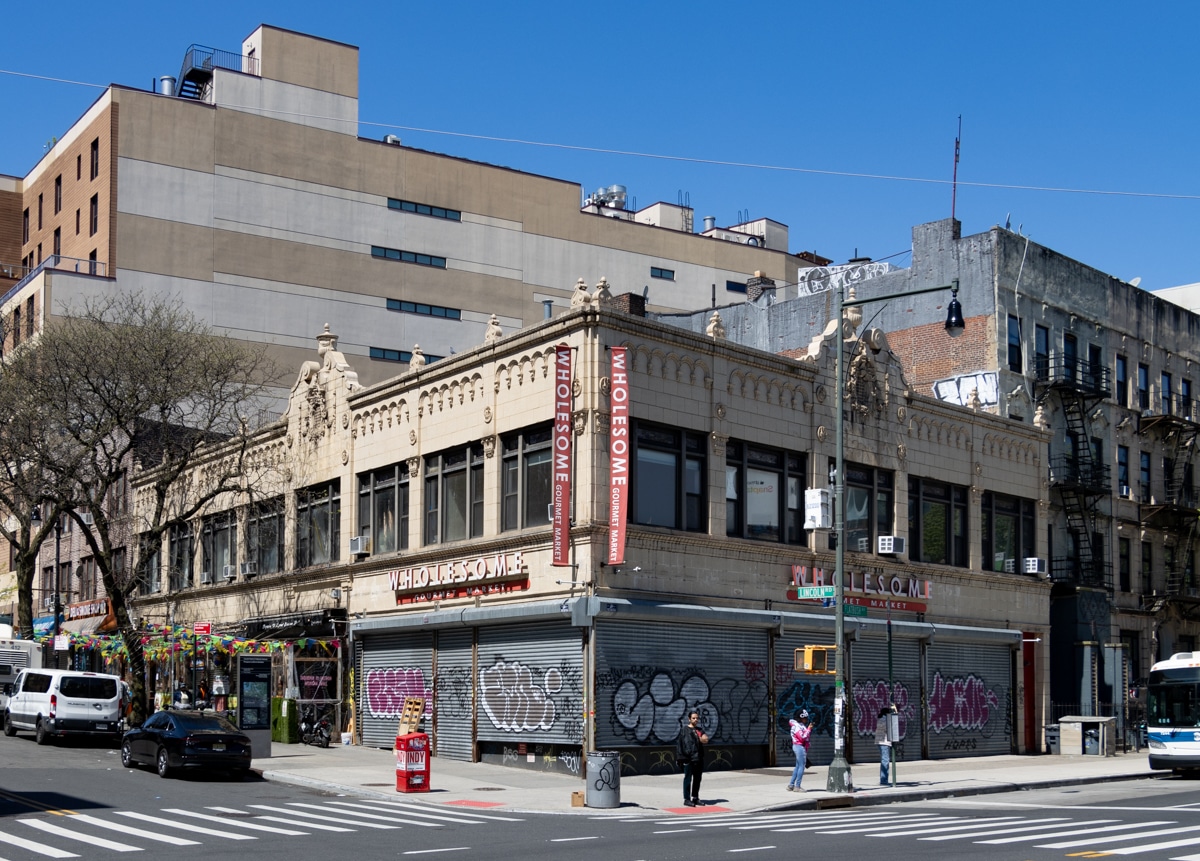Building of the Day: 21-27 North Oxford Street
Brooklyn, one building at a time. Name: Former bakery, now empty? Address: 21-27 North Oxford Street Cross Streets: Flushing and Park Avenues Neighborhood: Fort Greene (Wallabout) Year Built: Early 20th century Architectural Style: Brick 19th century style factory Architect: Unknown Landmarked: No The story: South Oxford Street turns into North Oxford when it crosses Myrtle…

Brooklyn, one building at a time.
Name: Former bakery, now empty?
Address: 21-27 North Oxford Street
Cross Streets: Flushing and Park Avenues
Neighborhood: Fort Greene (Wallabout)
Year Built: Early 20th century
Architectural Style: Brick 19th century style factory
Architect: Unknown
Landmarked: No
The story: South Oxford Street turns into North Oxford when it crosses Myrtle Avenue. Before the bakery was constructed, there were four brick houses on these lots. The map for 1886 shows them clearly, and the Brooklyn Eagle records advertisements for servants, as well as stories of the people who lived in 21, 23, 25, and 27 North Oxford Street.
21 North Oxford was home to an apparent suicide in 1895. Maurice Morson ingested arsenic and died. He apparently was a miserably angry man who fought often with his wife. The day before he killed himself, he had taken a stick to her when she tried to stop him from beating their twelve year old son. She told the coroner that the evening of his death, he had poured some coffee, and offered to share it with her. She thought that strange, since he wasn’t prone to acts of kindness or sharing.
He poured some of the coffee into the saucer, and then offered her the cup. After they finished their coffee, she said he was violently ill and threw up. But he refused to allow her to get a doctor, and a few hours later he was dead. The police found arsenic pills on his person, and the coroner found arsenic in his stomach. It was called a suicide, even though his wife admitted that she had once threatened to poison him. Hmmm.
Anyway, the newspaper accounts of people living in these houses continue far past the date we also know from maps that there was a bakery here. The insurance map of 1904 shows a large bakery on this location, one that includes what is now 15-19 North Oxford, next door. I can only surmise that the house numbers might have been changed. North Oxford is only one block long now, it never extended any farther north than it does now, as the Navy Yard is there. Before World War II, and the building of Navy Yard housing, it extended south to Myrtle Avenue.
By the 1920s, this was Pantry Bakeries. They baked pies, pastries and cakes, and delivered them in their fleet of trucks to restaurants and retail stores to the Greater New York area. They moved here to Brooklyn from a smaller plant in Long Island, after being taken over by a new management team. The bakery employed over fifty people at this location. A Brooklyn Standard Union piece from 1931 highlights the company’s growth and flaky crust pies.
Later in the 30s, this was a part of the Continental Baking Company. They were a huge baking conglomerate, started more humbly in 1849 by Robert Boyd Ward as the Ward’s Baking Company. You may remember their white glazed terra cotta building that was torn down for AY several years ago.
Ward’s eventually belonged to William Ward, the grandson of the founder, and he merged several large bakeries in several distant cities together to found the Continental Baking Company. They were most famous for producing Wonder Bread, the best-selling enriched bread ever, as well as their Hostess snack products, including Twinkies, a cake snack also enriched with something.
Continental, which was known for being pretty ruthless, must have absorbed or bought out Pantry Bakeries. This location belonged to Continental for only a couple of years, but was soon too small for their operations. In 1936 Continental sold the building to Francis Valva, who established a waste paper warehouse in half of it. After that, the trail runs cold as to what it was used for more recently, or when it was closed up.The two halves of the old factory, 15-19, and this building 21-27 were separated.
21-27 North Oxford is a very handsome building. The slightly arched windows and the decorative brickwork make this one a cut above your usual utilitarian factory. I hope it can be repurposed as retail/apartments, or as some kind of venue space. I would hate to see this one torn down for condoboxes.
(Photo:Google Maps)














What's Your Take? Leave a Comment